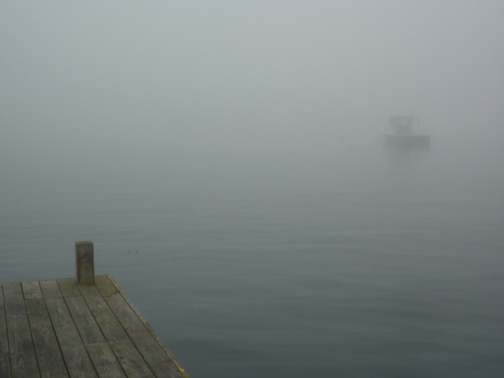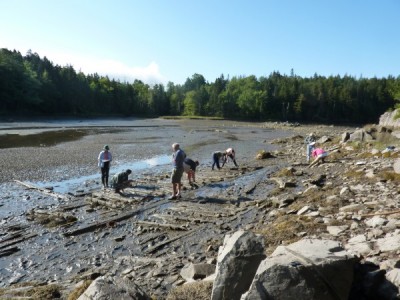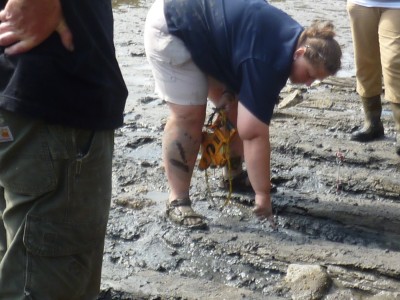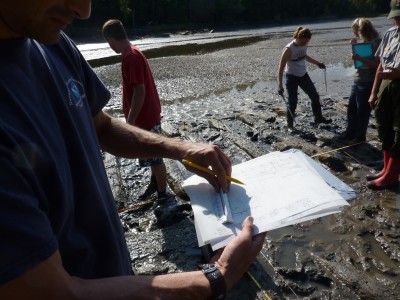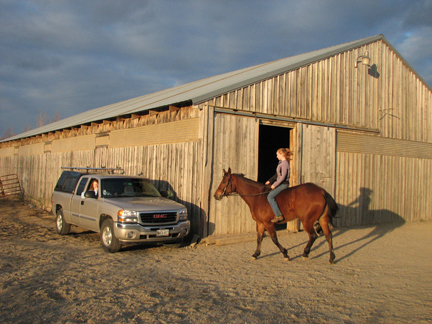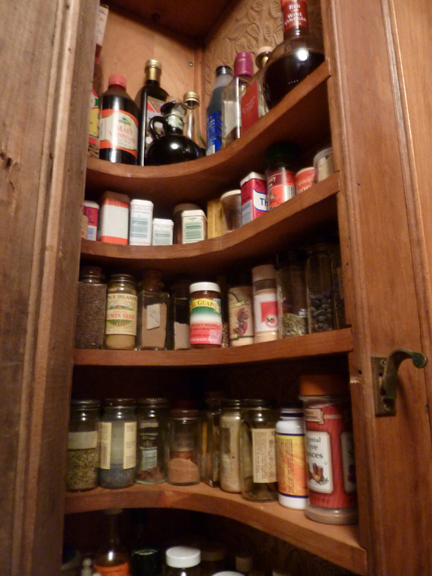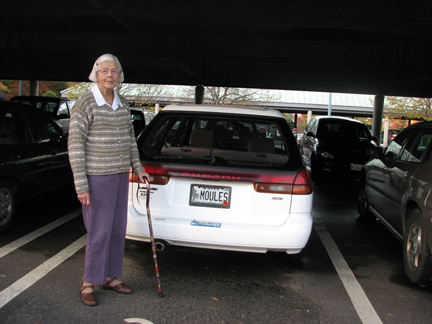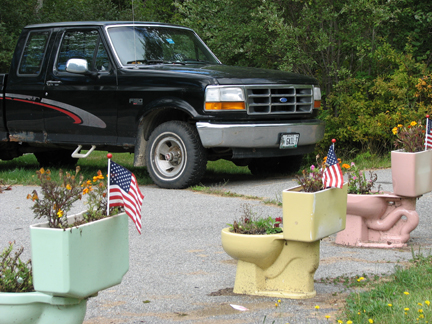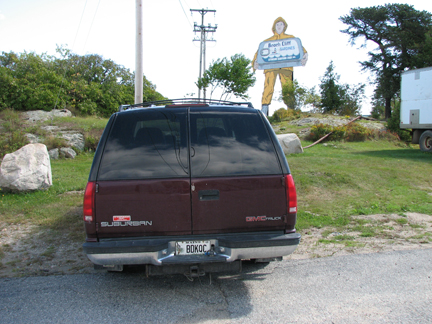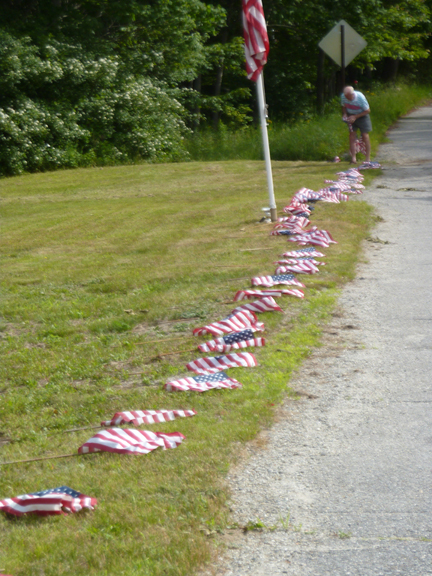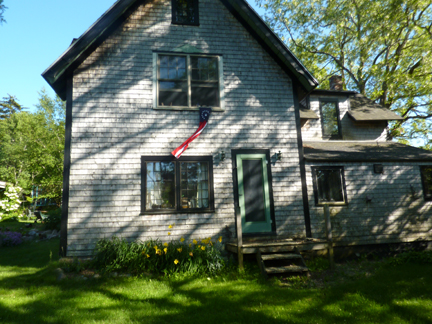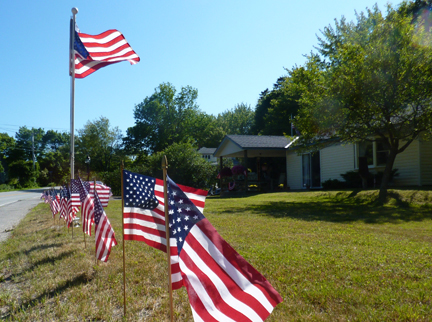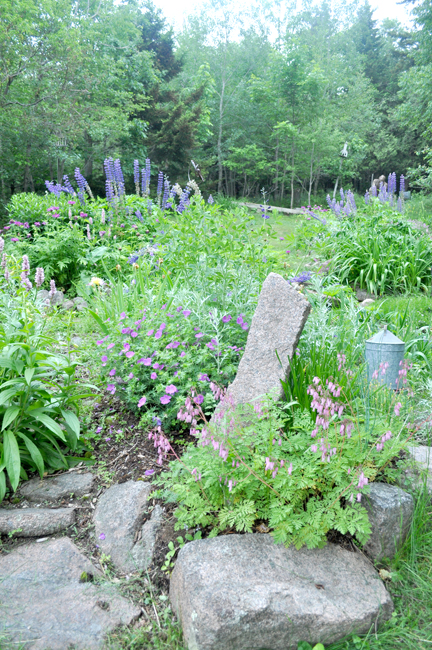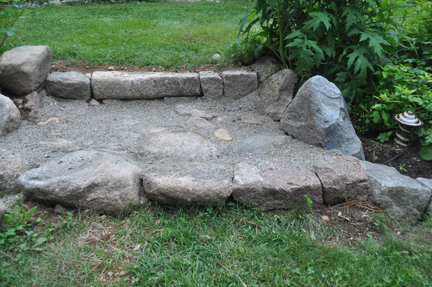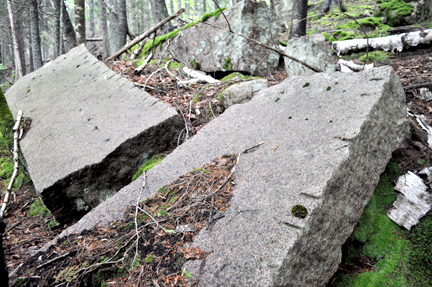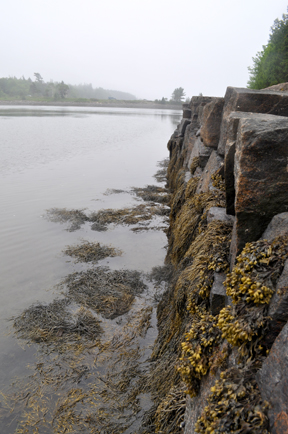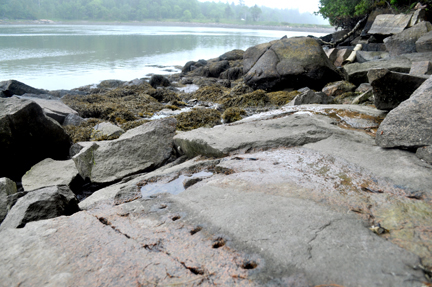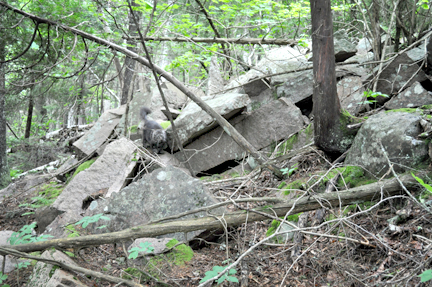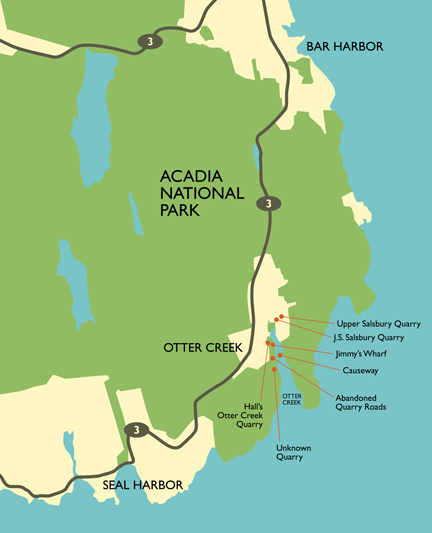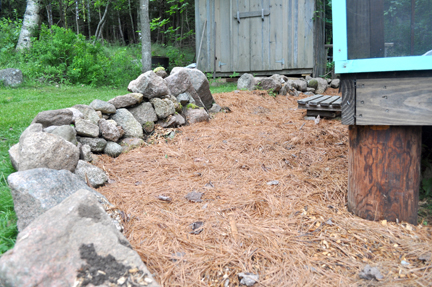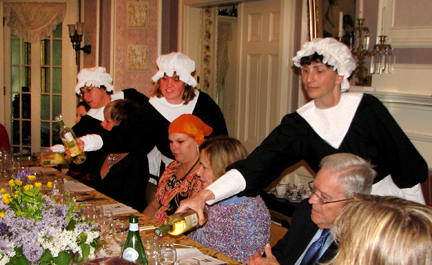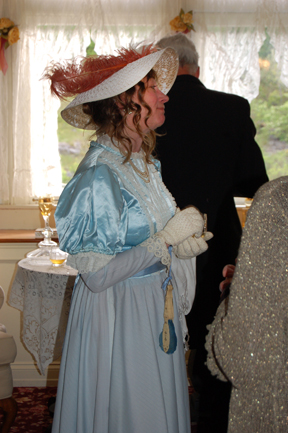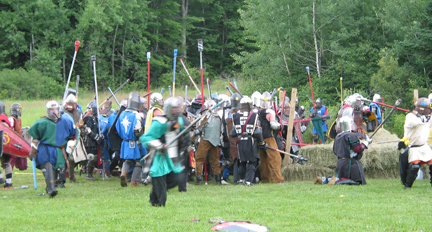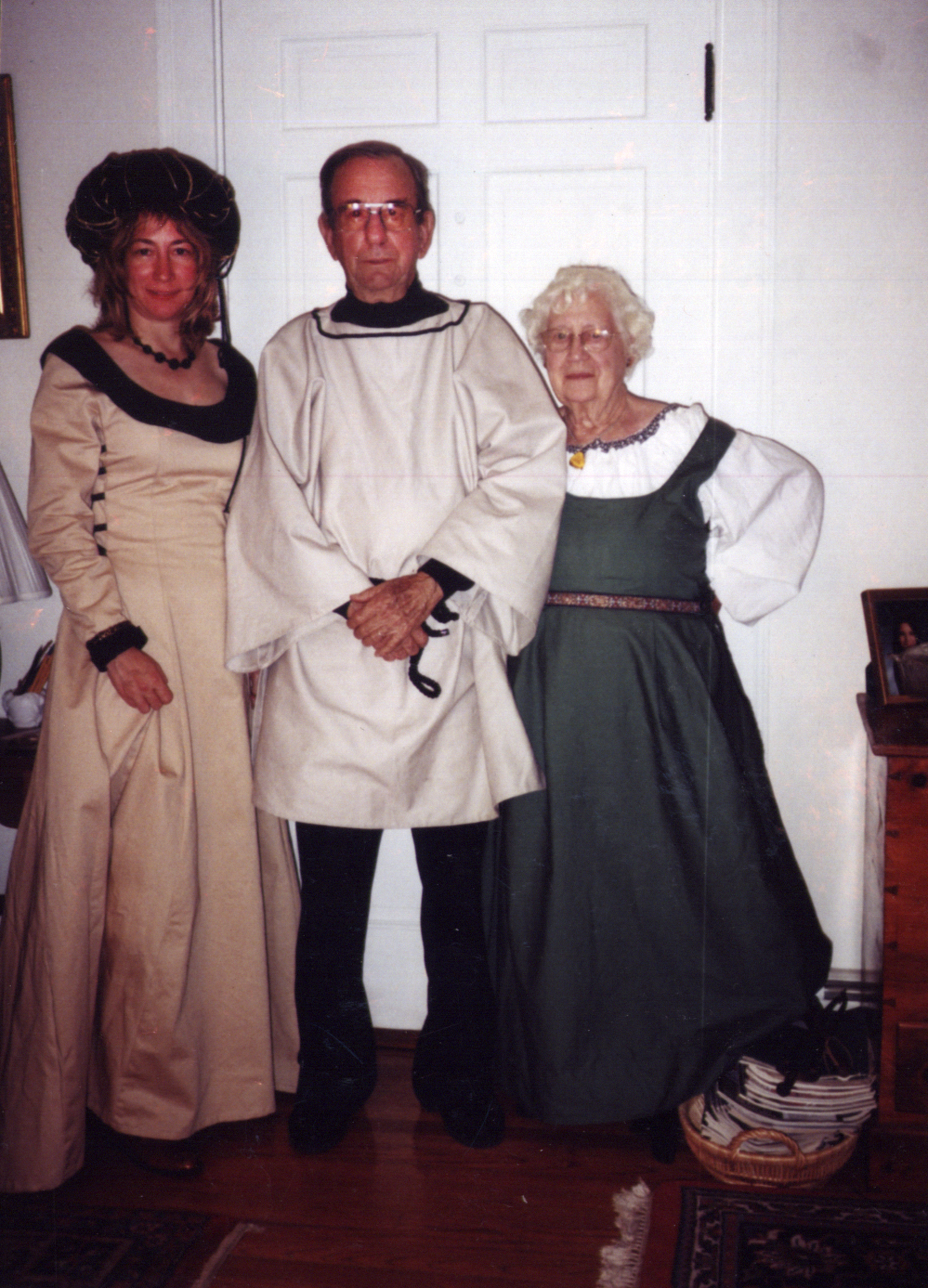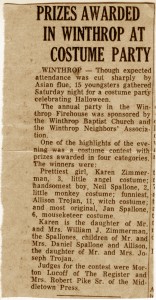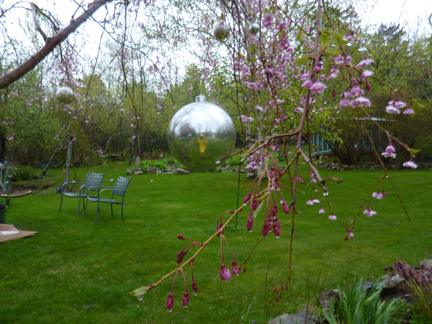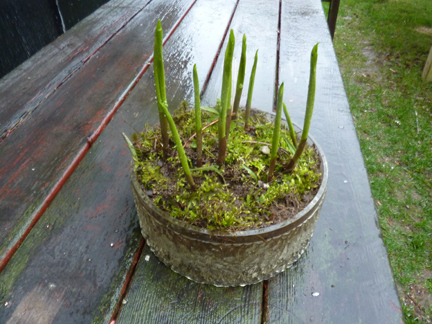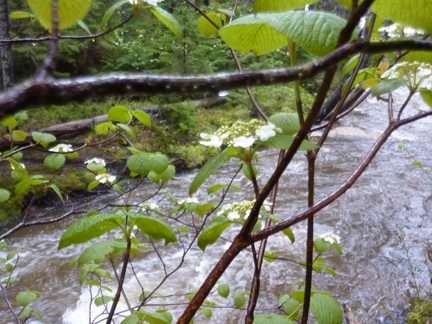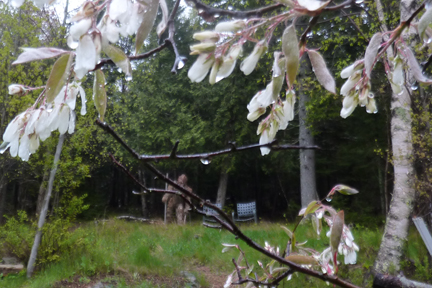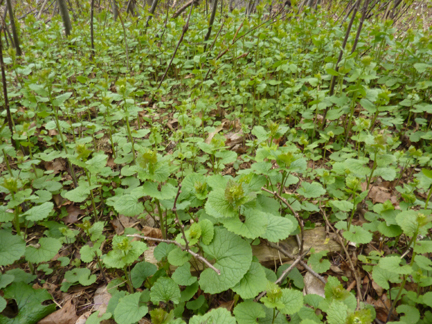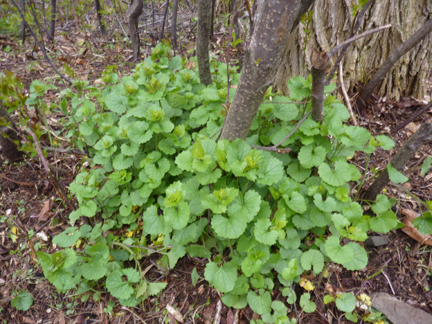A small boat on the ocean, visibility twenty feet, no navigation system, and close to ten o’clock at night is not a good place to be. We did not mean to be there, but there we were, lost in the fog.
Fog changes the familiar. It has a presence, and the cool moisture is palpable. It cloaks the sharp edges of things making them a bit less comfortable, but beautiful and mysterious. I am happy walking in fog on the well-known paths behind my house. The soft gray contrasts with the dark forms of trees, accentuating their branches. It is not weather to explore new territory, however, or to stray off the trail. Driving on foggy nights takes concentration. The road disappears into the light of the headlamps, and progress is slow and tense. I only drive on foggy nights out of necessity.
To be out in a boat in such weather is foolish, and it can be fatal. We were foolish, but it was not fatal. This sounds melodramatic, but we were indeed in danger. We know better, so how did this happen? How did we end up floating, engine quieted, trying to hear a bell or sound that might tell us where we were?
We live close to the ocean, and our favorite restaurant is on an island just a few miles offshore. The Islesford Dock is on an old wharf and you feel like you are floating on water as you eat. The location and views are enough reason to go, but the food is taste after taste of heaven: Buratta cheese, rice, grain and pine nut cakes with spruce tree oil and roasted vegetables from the garden out back, sautéed kale with just the right tenderness and garlic. I close my eyes and swoon whenever I think of their food. There are usually fellow ID fans at the bar, and it is always a joy to meet fellow addicts. You can get there by ferry, but that means planning, as well as eating, around the ferry schedule. So we bought a boat.
As soon as they open for the season we head out, and during the long summer days we are back safe in our harbor well before dark. We go several times a week, it is a short 15-minute ride and we know it well. The season was drawing to an end, and we felt the need to go as much as possible before they closed. The days were also getting shorter. We asked a couple of friends to join us, and to meet us at the dock at five, but from that point on a series of unfortunate events unfolded. Individually, none of them would have been a problem, but cumulatively we ended up where we did.
Life jackets, check. Hand-held compass, check. GPS, check. Hmm, batteries are low. A few minutes were taken to find new batteries and toss them in the bag. Cell phone check. Powerful spotlight. No check. We searched the shed where life jackets and this light are kept but could not find it. We went up the road to the garage, another possible place for it. We debated. We planned to return before dark, but it would be close. We felt we needed it, and went back to the shed and found the lamp where it had fallen behind the counter we store the jackets on.
We get to the dock, and instead of the boat on the water ready for our friends; they are there ahead of us. We launch and head off, half an hour behind schedule. As we are leaving the harbor I explain we were late looking for the light. I point to it, but where is it? We each thought the other had put it in. Again the debate, go without or go back? We go back for it. We arrive at the restaurant with time to eat quickly and get home before dark, but it is packed and we have to wait half an hour to order. It is then my husband reaches for his cell phone to find it is not hooked to his belt. The fog we had seen off in the distance moves in, between home and us. The fog is there, we have to go back through it, we decide we may as well eat first. But the kitchen is backed up, and it is after eight when we finally eat. If I had a choice of last meals, this would be it.
We get underway, but it is after eight, dark, and, as my husband says, the fog is dungeon-thick.
We leave the Islesford Dock and go from one buoy to the next. After the third one there is a short stretch before the buoy at the mouth of Northeast Harbor, which would guide us home. We pull out the GPS, but the batteries we had grabbed turn out not to be new batteries. We had our powerful lamp, but it simply reflected a wall of gray. We see dim running lights of another boat, and coming close see it is a boat someone had told us was going to Northeast. We follow it. At some point one of us said, “seems as though we should have hit that buoy by now.” The boat we were following was not heading to Northeast Harbor, but to Southwest Harbor. We turn around, and think we were heading back the way we had come, but become disoriented. We take a bearing with the hand held compass, but it just does not seem possible. Maybe the compass is broken, we think. We move slowly, sweeping our light across the water to let other boats know we were there. There is, surprisingly, traffic on the water. Large shapes heard long before they are seen.
The fog is so thick and heavy our clothing is wet and our hair is plastered to our heads and necks. The constant moan of ships’ horns let us know we have company out there, somewhere. And quite close, we just cannot see them. Abbie and John, our dinner companions, are in it with us, no accusations, fear or complaint. We discuss whether we should trust the compass, and take turns wielding the light. The possibility of being out all night is a real one. We are all calm, calling it an adventure, while offering reasonable suggestions and avoiding lobster buoys. Abbie has a cell phone, but it only has a few minutes left. We decide to save it as a last resort. A large piece of flotsam emerges from the fog and silently drifts by.
Finally we hear a bell, marking the harbor entrance. We get close, and check the number, it is can number two. It is the first bell we heard since we reversed direction and so we feel it has to be the mouth Northeast Harbor. If we set our bearings and trust the compass we would see harbor lights in about two minutes. We floated, keeping the red can in sight. If it was not the Northeast can, and there was a problem with the compass, we might be heading to Ireland. We were divided here on what to do. It felt like the win or lose question on Who Wants to be a Millionaire. It was really important that we make the right choice. It was time to use a lifeline. Abbie turned on her phone.
Our friend Edgar grew up on Islesford and makes his living on these waters. He had joined us briefly at dinner, and had been hired to bring a party back to the mainland. He couldn’t be far away. We called. Abbie explained our situation, and the red can. It is not long before Edgar tells Abbie, “I’ve got you, be right there.” In minutes the Instagator was beside us, and we felt safe, and could admit just how very unsafe we had been. As Edgar bobbed comfortingly beside us and offered to lead us to harbor, the Elizabeth T. came by. Captain Danny Lunt is another man who is at home on the water. He is a local legend, known for competency and calmness. They were headed for Northeast. Edgar asked him to guide us, and we left our lifeline to follow the Elizabeth.
It was a long ride. We were wrong, we had not been at the buoy at the mouth of Northeast Harbor, so it is a good thing we did not head off following the compass. We might very well have ended up out of sight of land, and very lost.
We followed Captain Lunt, but it was still not smooth sailing. His wife Linda describes that night as follows: Wild Ride Last Night on the Elizabeth T! Rainy, foggy, Dark, and around 9:30 someone in a small boat darted from nowhere in front of us, then did the same thing to the folks behind us – NOT SAFE! Don’t know who they were, but hope they are not on the water today!
We were the folks behind them, and thank them for bringing us home safely.
The next morning my husband called Edgar. “Good morning, God,” he said. “This is the village idiot calling to say thank you.”
Some lessons come at great expense. Our only price was a damp ride with cheerful friends.

